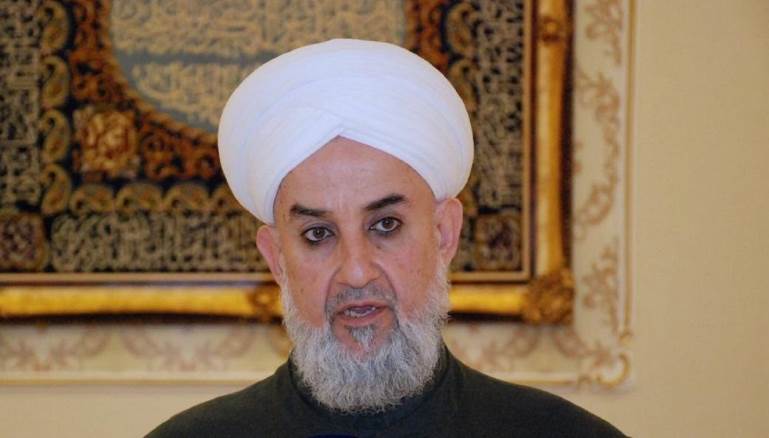The Assad authorities have achieved a new victory with the return of a religious figure to Aleppo a few days ago from where he was residing in Egypt. Sheikh Mahmoud al-Hout returned to Syria via Iraq, which means that his return occurred under Iran’s supervision—although that does not cancel out the fact that it was also with the approval of Assad’s intelligence agencies and that they do not have a problem with the sheikh, who forbade rebellion against the authorities with the outbreak of the revolution and described the revolution as “chaos.”
Hout’s travel to Egypt, which came when opposition groups began to take over the eastern districts of Aleppo, may have been to avoid having to take a political position, or to avoid instructions from the authorities, who wanted to use him more degradingly than he could stand.
Hout was an imam who drew crowds from various parts of Aleppo to listen to his Friday sermons. The mosque where he spoke in Bab al-Hadeed even became popularly known as the Hout mosque.
But Sheikh Hout was also the director of a religious school known as the Nabhaniyah School, which did not have a certificate of official recognition. However, it enjoyed state approval, including the provision of financial support and official approval for its situation as well as for the educational style and curriculum, as well as appointing its graduates as preachers in mosques overseen by the Ministry of Religious Endowments.
The Sheikh Mohamed al-Nabhan School was established in 1964—that is, a year after the Baath coup. It attracted residents from the countryside, and sent them back as preachers. During Sheikh Hout’s golden age, it attracted many from the city and became a truly exceptional phenomenon.
The school accepted members as young as 12, who would study there for six years. After that, some students continued their studies in al-Azhar, which recognized the school’s diplomas. Others commenced work as preachers in mosques. A child who belonged to the school removed his regular garb to immediately wear the outfit of sheikhs. The educational curriculum ranged between some books that inclined toward Sufism and others that tended toward Salafism.
Graduates, thanks to unseen facilitations, did not perform military service, which was hard for others to escape. This was perhaps due to the desire to keep them out of the army so they did not influence other soldiers and attract them.
The Nabhaniyah School and the tomb of Sheikh Nabhan were damaged when opposition groups controlled the area. Specifically, the tomb was intentionally vandalized, with the leaders of al-Nusra Front participating. The public reason for the attack on the tomb was al-Nusra and those like it were against the veneration of saints and their tombs. But the other, deeper reason, was that the jihadist groups were against Sufi Islam.
In light of the current polarization, it is easy for the sheikhs who stand against Assad to attack Sheikh Hout for returning to Aleppo. However, the impact of their attack will remain limited and restricted to those who previously opposed Assad’s rule. Recording positions against him in the media will not obstruct Hout’s machine from getting back into operation, and it will not prevent it from reaping gains greater than before, after the failure of activist political and jihadist Islam, and the failure of the “rebellion against authority.” The regime is betting on offering this type of Islam as a remedy for the political disappointments—that is, once again evoking religion to address political crises. Its danger lies in making a portion of society believe that religion is the permanent stop and an alternative to the pressing demands affecting life and the world.
This article was translated and edited by The Syrian Observer. Responsibility for the information and views set out in this article lies entirely with the author.


